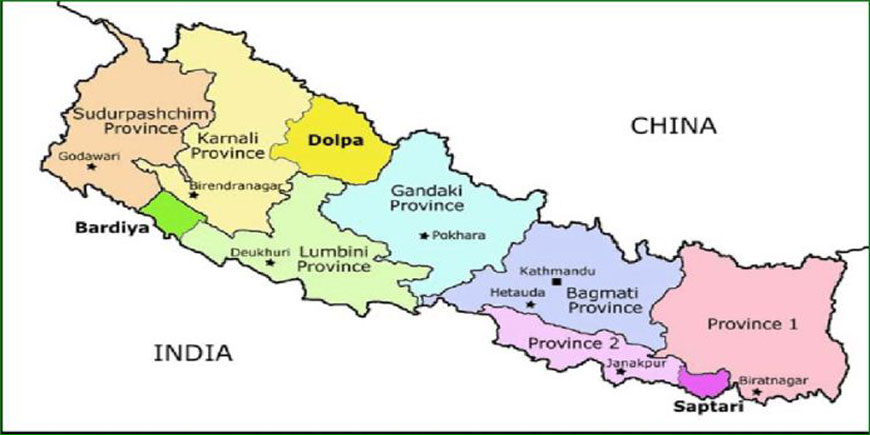Nepal is a multi-lingual, multicultural, multi-religious, and multi-ethnic country with a population of 29,164,578 as per the 2021 census. It is strategically located between India and China, earning it the nickname "sandwiched between two countries." "Nepal tourism," "Travel Nepal," "Visit Nepal," "Trekking in Nepal," "Mountaineering Nepal," "Kathmandu sightseeing," "Heritage sites in Nepal," "Himalayan wildlife" and "Eco-tourism Nepal."
Known for its high Himalayan mountains, artistic monuments, and exotic wildlife, Nepal is a major tourist destination often referred to as a "Land of Paradise" for tourists, trekkers, and mountaineers. It is home to Mount Everest, the highest mountain on earth, but offers much more than just trekking, with diverse scenery from jungles to steamy plains and verdant forests.
Nepal is a melting pot of diverse cultures, religions, languages, and ethnicities, and it is famous for its non-stop festivals. The country's natural beauty and cultural richness offer an unforgettable experience that is unique and exhilarating, making trekking in Nepal incomparable to anywhere else in the world. Nepal’s extremes encompass the world's highest mountains, populated valleys, forested plains, deep gorges, and tranquil lakes, making it a land of endless enchantment.
Nepal in brief
Location: Between India and the Tibetan autonomous region of the Republic of China
Area: 147,181 square kilometer
Capital: Kathmandu
People: More than 100 ethnic groups (59 yet recognized by government) and 92 spoken languages
Political system: multi party democracy, Federal Republic democratic country
Topography: from the world’s deepest gorge ‘Kali-Gandaki’ to the highest point on earth ‘The Everest’
Vegetation: As per the size of the country, Nepal possesses some of the most outstanding bio-diversity in the world, ranging from sub-tropical rain-forests to Alpine deserts.
Weather: Climate ranges from Tropical in the low lands to Arctic in higher altitudes.
Season: Winter (December to February), Summer (March to May), Monsoon (June to August), Autumn (September to November) [Monsoon: mostly rains, making the following day crispy clean and fresh. Most of the northern belt of the trans-Himalayan Zone is rain-shadowed and ideal for trekking.
National Bird: Impean Pheasant (Danfe)
National flower: Rhododendron-Arboreum (Lali Gurans)
World Heritage sites (Cultural)
- Shoyambhu
- Boudha
- Changunarayan
- Pashupatinath
- Kathmandu Durbar Square
- Patan Durbar Square
- Bhaktapur Durbar Square
World heritage sites (Natural)
- Everest National Park (1148 square kilometer
- Royal Chitwan National Park (932 square kilometer)
National Parks:
- Bardia National Park (968 square kilometer)
- Langtang National Park (1710 square kilometer)
- Shey –Phoksundo National Park (3555 square kilometer)
- Rara National Park (106 square kilometer)
- Khaptad National Park (225 square kilometer)
- Makalu-Barun National (2330 square kilometer)
Wildlife Reserves
- Shukla Phanta Reserve (499 square kilometer)
- Parsa Reserve (499 square kilometer)
- Koshi-Tappu Reserve (175 square kilometer)
Conservation areas:
- Annapurna (2600 square kilometer)
- Makalu-Barun (2330 square kilometer)
Hunting Reserve:
- Dhorpatan (1325 square kilometer)
Endanger Species
Tiger, Rhino, Snow leopard, Clouded leopard, Red panda, Brown bear, Asamese macaque, Gangetic dophin, Wolf, wild elephant, Giant horn-bill, swamp deer, wild yak, Nayan, Tebetan antelope, Black buck, four horned antelope, musk deer pigmy hog, Haspid harem Pangolin, Gharial, Indian bustard Saras crane, Impean pheasant, Python.
Wildlife:
Nepal harbors one of the world’s best habitants for one horned rhino, royal Bengal tiger, snow leopard, clouded-leopard, Red panda, blue-sheep and long snouted fish eating Gharial. Other wildlife includes wild elephant, buffaloes, bisons, blue bull, brown bear, sloth bear, leopard, crocodiles and many varies of cat, dog, deer and antelope families and 840 different species of wet land, migratory and residential birds.
A living cultural Heritage:
The heritages in Nepal are alive and dynamic. Shmanism, Pananimism and witch craft are still practiced in remote regions. Temples, shrines, monuments and monasteries with devotees burning butter-lamps, singling hymns, chiming temple bells and playing drums are spotted everywhere as a living cultural heritage.

